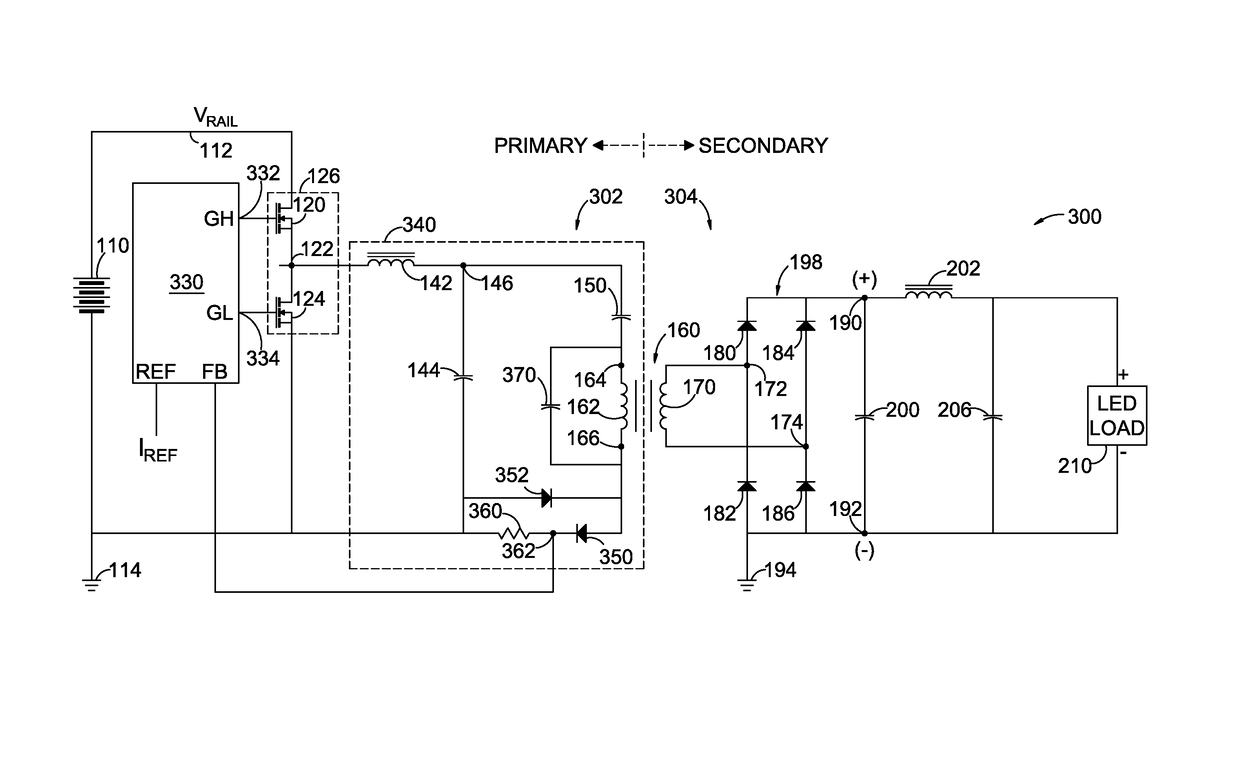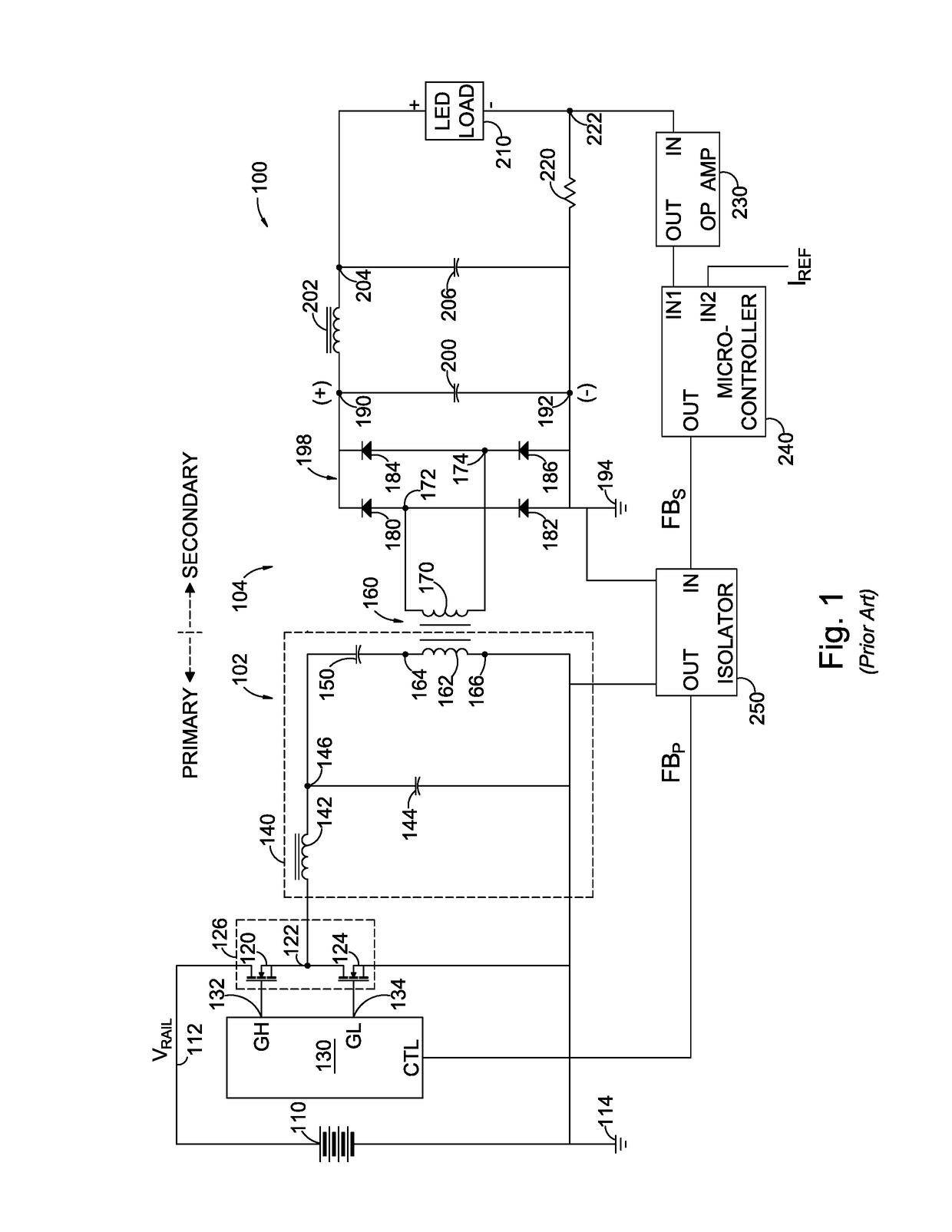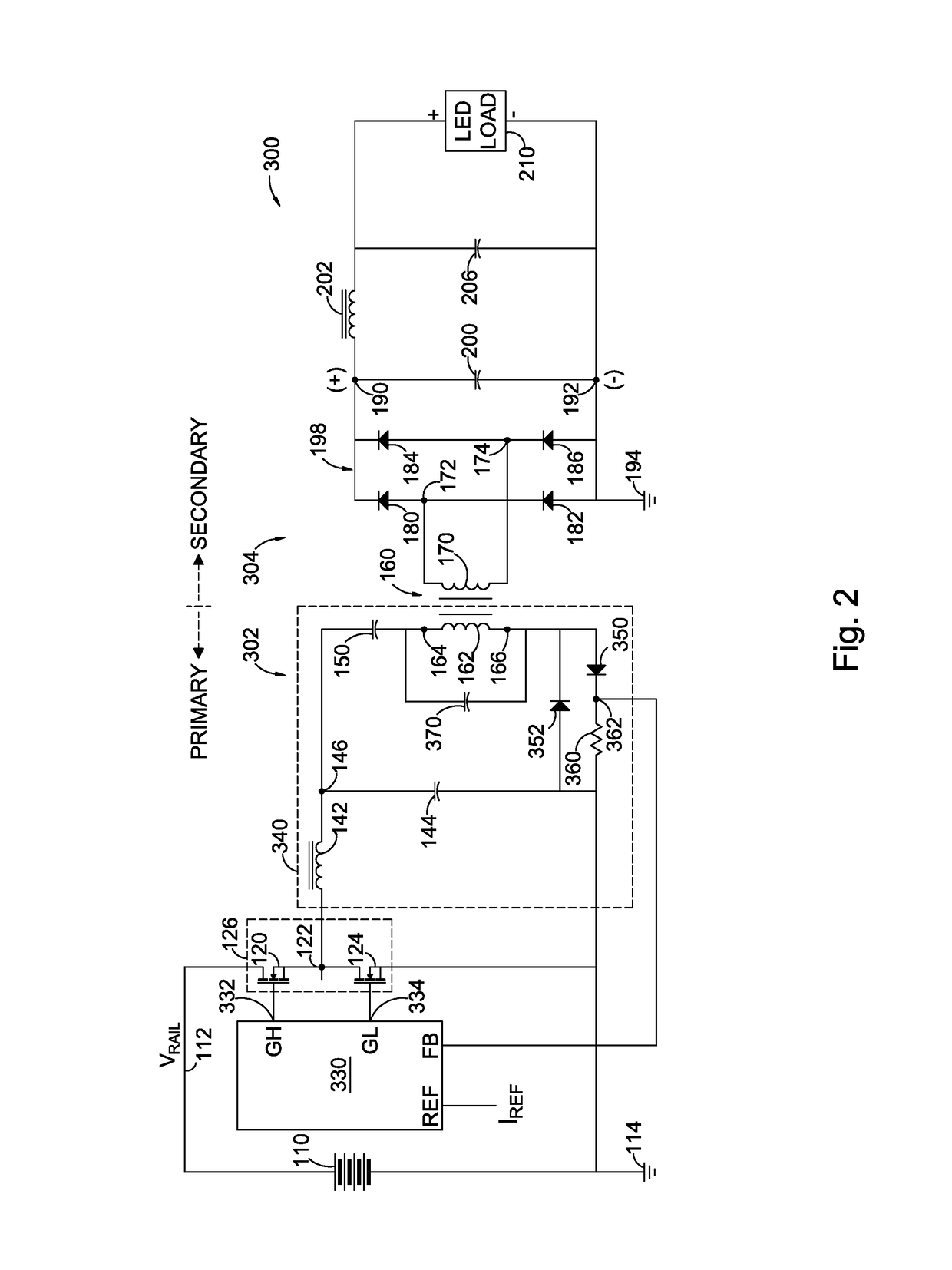Primary current sensing method for isolated LED driver
a technology of led driver and current sensing method, which is applied in the direction of electric variable regulation, process and machine control, instruments, etc., can solve the problem of costly conventional sensing techniques on the secondary sid
- Summary
- Abstract
- Description
- Claims
- Application Information
AI Technical Summary
Benefits of technology
Problems solved by technology
Method used
Image
Examples
Embodiment Construction
[0038]An exemplary solution to the problem disclosed in FIG. 1 is illustrated by an improved LED driver circuit 300 in FIG. 2. The LED driver circuit in FIG. 2 is similar in many aspects to the LED drive circuit 100 in FIG. 1 and corresponding components are numbered accordingly. The basic forward operational characteristics of a DC-AC inverter 302 on the primary side of the isolation transformer 160 and an AC-DC converter 304 on the secondary side of the transformer are similar to the previously described operational characteristics. Accordingly, the basic operation is not described again.
[0039]Unlike the previously described LED driver circuit 100 of FIG. 1, the improved LED driver circuit 300 of FIG. 2 does not have a feedback circuit from the secondary side to the primary side. The current sensing resistor 220, the operational amplifier 230, the microcontroller 240 and the isolator circuit 250 of FIG. 1 are not required in the LED driver circuit of FIG. 2. In FIG. 2 the negative...
PUM
 Login to View More
Login to View More Abstract
Description
Claims
Application Information
 Login to View More
Login to View More - R&D
- Intellectual Property
- Life Sciences
- Materials
- Tech Scout
- Unparalleled Data Quality
- Higher Quality Content
- 60% Fewer Hallucinations
Browse by: Latest US Patents, China's latest patents, Technical Efficacy Thesaurus, Application Domain, Technology Topic, Popular Technical Reports.
© 2025 PatSnap. All rights reserved.Legal|Privacy policy|Modern Slavery Act Transparency Statement|Sitemap|About US| Contact US: help@patsnap.com



